Outreach programme for restoration of dunes in the Gisborne/Tairāwhiti and Otago regions
A poster summarising this project as per March 2017 can be downloaded here. It may be used and reproduced freely, provided it is not changed.
Final update - April 2019
Introduction
The Coastal Restoration Trust has just completed a project funded by DOC’s Conservation Fund to provide technical support for coastcare programmes in two regions - Gisborne/Tairāwhiti, and Otago. The project ran for over 2 years from September 2016 to April 2019.
The aims of the project were:
- Provide technical support to the two regions with the aim of encouraging development of self-sustaining coast care programmes;
- Build managerial, political and community support for coast care at a local level in two regions; and
- Train and mentor local advocates to assist local councils and communities in assessment, planning, design and implementation of coast care restoration works.
The project has been successfully completed by the Coastal Restoration Trust in collaboration with the regional coordinators contracted during the project in both Gisborne/Tairāwhiti and Otago regions. This update provides an outline of the project, progress made in supporting local coast care initiatives in both regions, and commentary on future coast care restoration.
Project delivery
The key objective of the project to encourage local regional and district councils to initiate and support coast care work was the main driver with the aim of:
- Increasing the proportion of degraded sand dune ecosystems under effective restoration and management;
- Providing more habitat for rare and threatened species;
- Improving awareness of the cultural and archaeological values of dune systems; and
- Helping coastal communities build resilience against natural events.
The project was undertaken by Coastal Restoration Trust trustees, and in particular Jim Dahm, with considerable technical experience in the provision of information and advice to management agencies and communities on the restoration of appropriate indigenous ecosystems. This, along with the local advocates already with highly technical skills and with local networks, were instrumental in the outreach objectives of this project - Jennie Harré Hindmarsh covered the Gisborne/Tairāwhiti region, and Paul Pope the Otago region.
Building coast care programmes
Delivery of the project focused on the following procedures which have been used to initiate and build coast care programmes successfully in other regions. This included:
- Raising community and management agency understanding of the importance and benefits of dunes and dune ecosystems;
- Provision of best practice information on dune restoration, management and monitoring that is practical at the local level – including training workshops for staff and communities;
- Within each area, local sites were assessed with local management agencies and communities to assist in the assessment and design of appropriate restoration works; and
- Assistance was provided to local councils and communities to develop an ongoing strategy to build coast care work in their area.
Gisborne/Tairāwhiti region outcomes
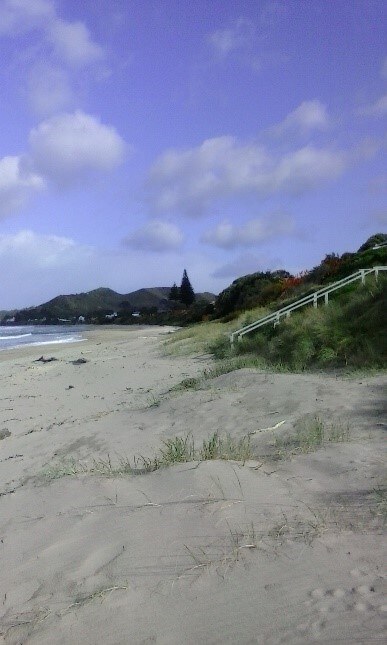 Spinifex runners & dunes reforming from some of the Oct 2018 spinifex plantings by the Wainui Coast Care Group with involvement of a more recently arrived property owner in this location who was keen to join in and learn about this process.Numerous meetings, site visits and presentations were organised by Dr Jennie Harré Hindmarsh with individuals, groups and agencies primarily Gisborne District Council (GDC) and the Department of Conservation over Year 2 of the project (both Milestone 1 & 2 periods). At Gisborne’s main beach Waikanae Beach this included:
Spinifex runners & dunes reforming from some of the Oct 2018 spinifex plantings by the Wainui Coast Care Group with involvement of a more recently arrived property owner in this location who was keen to join in and learn about this process.Numerous meetings, site visits and presentations were organised by Dr Jennie Harré Hindmarsh with individuals, groups and agencies primarily Gisborne District Council (GDC) and the Department of Conservation over Year 2 of the project (both Milestone 1 & 2 periods). At Gisborne’s main beach Waikanae Beach this included:
- Waikanae Coast Care group and GDC to develop a Waikanae Beach Coast Care Group with a focus on ‘rescuing’ dune restoration associated with Oneroa Walkway along the city’s main beach
- Inaugural Waikanae Beach coast care community seminar and planning meeting held.
- Waikanae Beach Coast Care planning for the local demonstration site with Jim Dahm to re-restore a demonstration plot on weed-infested dunes beside the Oneroa Walkway.
At Wainui Beach to the north of Gisborne outreach meetings and field-based workshops included:
- Presentation and display for their ‘Wainui Environment Hui’ on 25th August 2018 at Wainui Beach School hall organised by the Gisborne Boardriders’ coordinator and including local coastal restoration and care initiatives and programmes, led by community groups Tairāwhiti Environment Centre, Enviroschools, DOC Tairāwhiti & GDC.
- Review Wainui Beach Management Strategy & GDC’s recent consents application for several Wainui Beach sites and related emails with Jim Dahm and David Bergin.
Other activities included:
- Planning with Coastal Restoration Trust Trustee and Uawanui Ecological Restoration Trust and Tāhuna Ora Trustee Alison Waru.
- Presentations to a GDC Councillors workshop involving most Councillors, Mayor, CEO and the senior leadership team, and a GDC staff workshop with Jim Dahm.
Otago region outreach
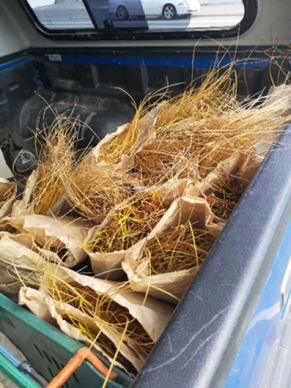 February 2018: Harvested pingao seed to be delivered to the horticulture programme at the Otago Correctional facility. The partnership between an agency, outreach and communities is going to help break down barriers for community groups, develop inmate skills and broaden the habitat area of this endangered plant on the Otago Coastline.Field site visits and meetings with local community groups and representatives were organised and facilitated by Paul Pope over the 2 years of the project. Over the final year (Year 2 Milestones 1 & 2), this included:
February 2018: Harvested pingao seed to be delivered to the horticulture programme at the Otago Correctional facility. The partnership between an agency, outreach and communities is going to help break down barriers for community groups, develop inmate skills and broaden the habitat area of this endangered plant on the Otago Coastline.Field site visits and meetings with local community groups and representatives were organised and facilitated by Paul Pope over the 2 years of the project. Over the final year (Year 2 Milestones 1 & 2), this included:
- Site visits and meetings with community coast care groups and Dunedin City Council key staff including coast care and potential projects with both Parks and Operations Departments - overview of national Coast Care programme set ups, coastal issues and community based restoration programmes, followed by detail of local projects and discussion
- Determining location and objectives for at least one community based trial project site where we start to pull an agreed plan of action together
- Presentation to three Community Boards and introduce the ideas at a local political level
- Identify other key stakeholders relevant to the selected project sites
- Presentations to and workshops to local coastal communities.
Coastal dune site visits, presentations and meetings were held at each of the following locations over the last year of the project to council, local community and iwi:
- St Clair Beach, south Dunedin, St Clair Action Group
- Tomahawk Smaills Beach, Beachcare Group
- Aramoana, Brighton Beach and Ocean View
- Whareakeake Beaches and Waikouaiti Coast
- Port Otago, Purakaunui, Long Beach, Boulder Beach.
The Outreach Project was also extended to providing a presentation and field site advice to the Southland Landcare Networking day on 10th March 2018, meeting with various Southland community groups and local councils including Environment Southland and Invercargill City Council at a range of sites.
Region-specific technical advice
Key points listed by the regional coordinators as a result of this outreach project have been collated.
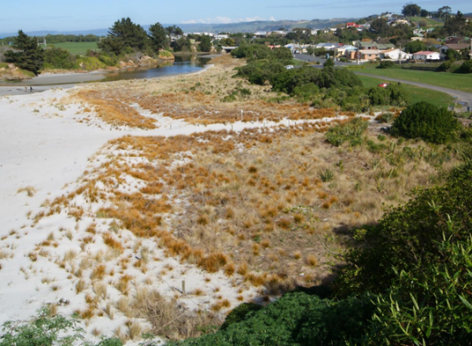 Example of the pocket beach restoration at Brighton, south of Otago PeninsulaFor the Otago region, reported:
Example of the pocket beach restoration at Brighton, south of Otago PeninsulaFor the Otago region, reported:
- The workshops were successful in getting across the message on “soft engineering” and a move away from the structural engineering paradigm in the coastal space.
- As the outreach programme continued and meetings were held with community groups it became clear that there was a genuine interest in protecting dune and beach areas around Otago.
- The workshop with the Dunedin City Council staff was very useful, with a mix of planners, parks staff, designers and the newly appointed geomorphologist. Feedback from staff indicated they were quite inspired by the discussion and it bodes well for further contact with the Trust.
- Meeting with Port Otago and the onsite visits with the Aramoana community indicated they have moved significantly from a marram-based approach to a willingness to work with Jim Dahm and Paul Pope on a demonstration trial of native plant species.
- Invitations from several local community boards were received for specific workshop with them following site visits and meetings.
- Plans underway to increase the production of pikao with the local council, DOC and with the support of the Department of Corrections.
The project highlighted some of the site-specific issues with restoration and community coast care involvement required to progress region-wide restoration of natural sand dune systems. One of the most undervalued coastal reserves in Dunedin is Island Park, Waldronville, which has significant natural values that make it a site of real potential coastally, ecologically and recreationally. Critical values include scale, biological diversity, proximity to community, scenic and landscape values.
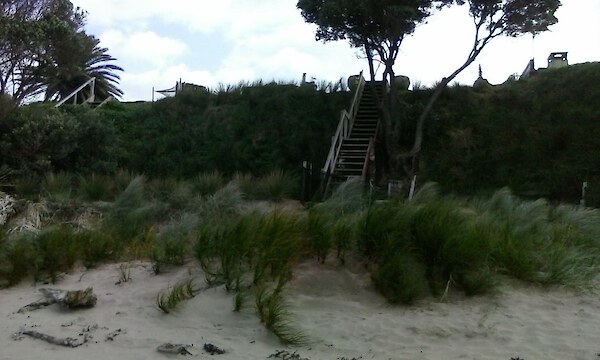 Example of recent Wainui Beach dunes restoration progress – informed by technical advice in 2017/18 for spinifex and pingao plantings on flat sand at base of dunes face, and of wiwi and NZ spinach on dunes face that was initiated by a Wairere Rd beachfront property owner (who also is a GDC staff member) inspired by dune restoration progress further north on the beach.In the Gisborne/Tairawhit region technical advice was provided as a result of the Outreach project to the GDC staff (engineers & reserves), beachfront property owners, and the Wainui Beach Coast Care members, in response to questions about planting using fertiliser, mulches, compost and hydrogels. Coastal Restoration Trust resources including the Technical Handbook and the bulletins were made available via links to the Trust’s website.
Example of recent Wainui Beach dunes restoration progress – informed by technical advice in 2017/18 for spinifex and pingao plantings on flat sand at base of dunes face, and of wiwi and NZ spinach on dunes face that was initiated by a Wairere Rd beachfront property owner (who also is a GDC staff member) inspired by dune restoration progress further north on the beach.In the Gisborne/Tairawhit region technical advice was provided as a result of the Outreach project to the GDC staff (engineers & reserves), beachfront property owners, and the Wainui Beach Coast Care members, in response to questions about planting using fertiliser, mulches, compost and hydrogels. Coastal Restoration Trust resources including the Technical Handbook and the bulletins were made available via links to the Trust’s website.
Concluding reflective notes
From Paul Pope, Otago region:
- The Otago outreach programme has had its challenges, specifically around breaking down existing attitudes to the ideas around coastal restoration and beach care. However, that has largely been because the Otago region has been isolated at a national level from a broader understanding of coastal management and coastal processes. It has also been about land tenure, where all coastal and dune areas around Otago are managed by the Dunedin City Council or the Department of Conservation and there have not been the same development pressures in these areas. This has meant that the general public have left restoration to both agencies rather than take a key role in it themselves. Apart from a few small groups and champions that has largely been the example set in the region. This has meant that with limited resources and a reliance on engineering beach care has been very slow to develop.
- The other aspect is that larger scale trials have never been attempted in the region, so there is nothing to compare or learn from. With the partnership of the Correctional Facility the pathway for creating such projects has been developed and allows resources from existing Council and DOC budgets to be partnered with the community more successfully. While the scale seems relatively small it’s a big step for the region and especially important that it is being led at a local political level like the Brighton Saddle Hill Community Board.
- It is time the region stopped relying on the engineering paradigm and utilised coast care and ecologically based restoration of the substantial and impressive dune areas that are available in the area.
From Jennie Harré Hindmarsh, Gisborne/Tairāwhiti region:
- A priority is now to identify more funding sources to enable the continuation and expansion of a Coastal Restoration Outreach Coordinator role or similar, and/or to contract in more expertise to lead specialist workshops, provide technical advice and co-write with locals the more detailed site-specific technical plans, proposals and related funding applications required.
- Without this ‘facilitative oil’, it remains a risk that great initiatives which have a lot of community and conceptual support will not be followed through on and fully developed and implemented.
- The Eastland Community Trust’s recently announced Tairāwhiti Community Well-being Framework www.ect.org.nz may provide an opportunity to apply to ECT for such funding support in due course, and any potential Department of Conservation community funding sources also need to be explored.
- Funded time could also enable community groups to prepare submissions to GDC and related organisations on related policy and planning matters – which volunteers rarely have time to do within the (inevitably-very-tight) timeframe provided.
Contacts:
[Enable JavaScript to view protected content] - Administrator, Coastal Restoration Trust of New Zealand
[Enable JavaScript to view protected content] and [Enable JavaScript to view protected content]- Scientists, Coastal Restoration Trust of New Zealand
Outreach Programme for the Restoration of Dunes - October 2017
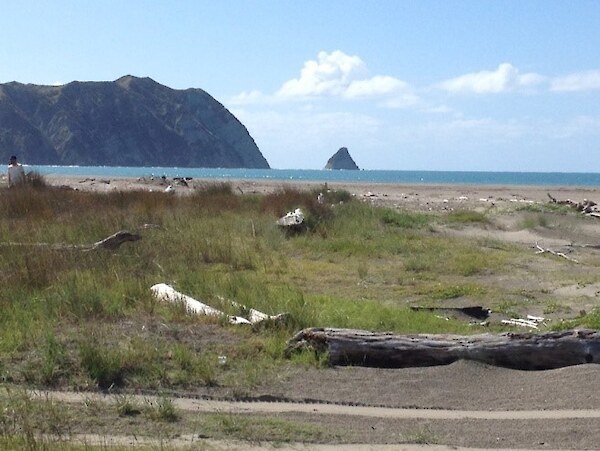 Tolaga Bay, East Coast
Tolaga Bay, East Coast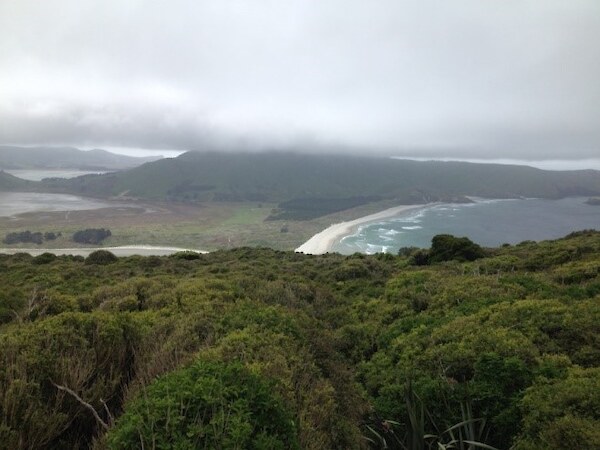 Aromoana, Otago PeninsulaThe Coastal Restoration Trust is working in two regions - Gisborne/East Coast and Otago - to assist local communities and councils in developing capability for restoration and management of their coastal sand dunes.
Aromoana, Otago PeninsulaThe Coastal Restoration Trust is working in two regions - Gisborne/East Coast and Otago - to assist local communities and councils in developing capability for restoration and management of their coastal sand dunes.
This project is funded by the Department of Conservation’s Community Fund in collaboration with coast care groups and councils in each region.
Field Advisors have been engaged in each of the two target regions to assist in implementing this outreach programme. The work will include:
- liaison with management agency staff and local community groups to promote and build support for Coastcare dune restoration
- running workshops in each region for local communities, agencies and other interest groups
- running field visits to local dune systems to provide site-specific advice with local experts and advocates illustrating approaches to consider in dune restoration and management
The aim is to provide a basis for detailed planning and prioritised implementation of the coastcare work required at each site. Measures of success include:
- raising community and management agency understanding of the importance and benefits of dunes and dune ecosystems
- increasing the proportion of degraded sand dune ecosystems under effective restoration and management with a focus on planting and managing appropriate native plant communities
- improving awareness of the cultural and archaeological values of local dune systems
- building local support and capacity for dune restoration
